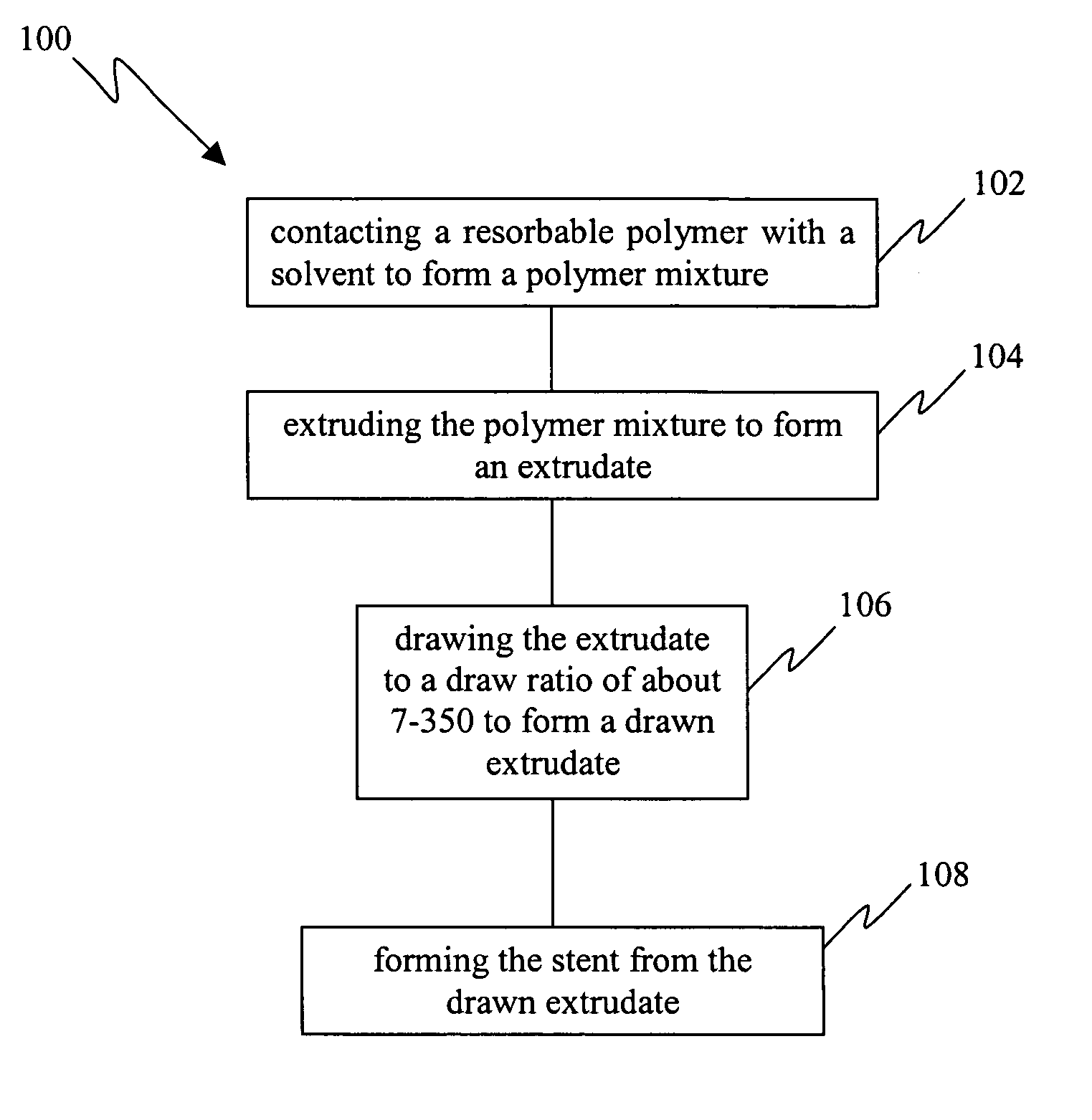Minimal injury resorbable stent
a resorbable, minimally injured technology, applied in the field of resorbable stents, can solve the problems of prolonging the angioplasty treatment, increasing the cost, and unfavorable local thrombosis, and achieves high molecular alignment or orientation, enhanced properties
- Summary
- Abstract
- Description
- Claims
- Application Information
AI Technical Summary
Benefits of technology
Problems solved by technology
Method used
Image
Examples
Embodiment Construction
[0020] Reference will now be made in detail to the embodiments of the present invention, examples of which are illustrated in the accompanying drawings.
[0021] Resorbable polymers extruded via conventional melt extrusion exhibit relatively high entanglement densities and this serves to limit the ultimate draw ratios (typically less than 10) and therefore the tensile strengths that may be achieved for these polymers. The traditional method to achieve chain orientation is based on drawing a melt extruded or molded polymer, often semi-crystalline, in the solid state at temperatures above its glass transition temperature. In this state, chain mobility is likely to be limited by entanglements as well as chain interactions and crystallinity. Therefore, it is also likely that entanglements, chain folds, and fragments of crystals survive the drawing process (which allows only limited drawing) and persist in the drawn polymer as defects which serve to limit the strength. The limitations impo...
PUM
| Property | Measurement | Unit |
|---|---|---|
| tensile strength | aaaaa | aaaaa |
| tensile strength | aaaaa | aaaaa |
| tensile strength | aaaaa | aaaaa |
Abstract
Description
Claims
Application Information
 Login to View More
Login to View More - R&D
- Intellectual Property
- Life Sciences
- Materials
- Tech Scout
- Unparalleled Data Quality
- Higher Quality Content
- 60% Fewer Hallucinations
Browse by: Latest US Patents, China's latest patents, Technical Efficacy Thesaurus, Application Domain, Technology Topic, Popular Technical Reports.
© 2025 PatSnap. All rights reserved.Legal|Privacy policy|Modern Slavery Act Transparency Statement|Sitemap|About US| Contact US: help@patsnap.com



